Time Capsule Towns in New Mexico
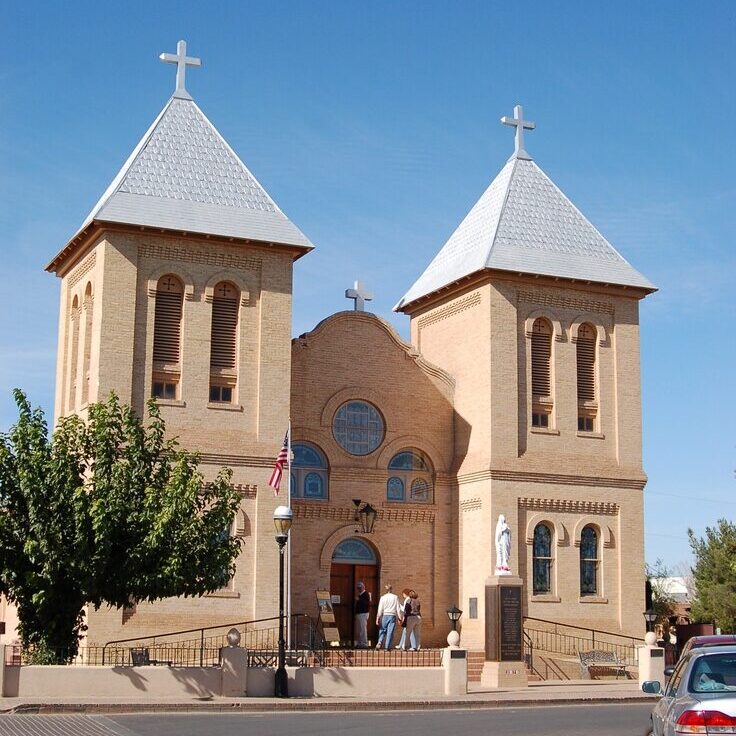
New Mexico is perhaps one of the most historically significant locations in the Americas. Footprints reaching back up to 23,000 years are the earliest evidence of human activity here, predating the advent of other civilizations on the continent. Although the state’s most notable historic landmarks are much younger than those ancient footprints, they nonetheless depict centuries of history, spanning from early Indigenous cultures and Spanish missions to US nuclear bomb research facilities. If you want to travel through time, these time capsule towns New Mexico cities will serve as your personal time machine, carrying you through centuries of history. Let’s explore the time capsule towns in New Mexico :
Acoma Pueblo
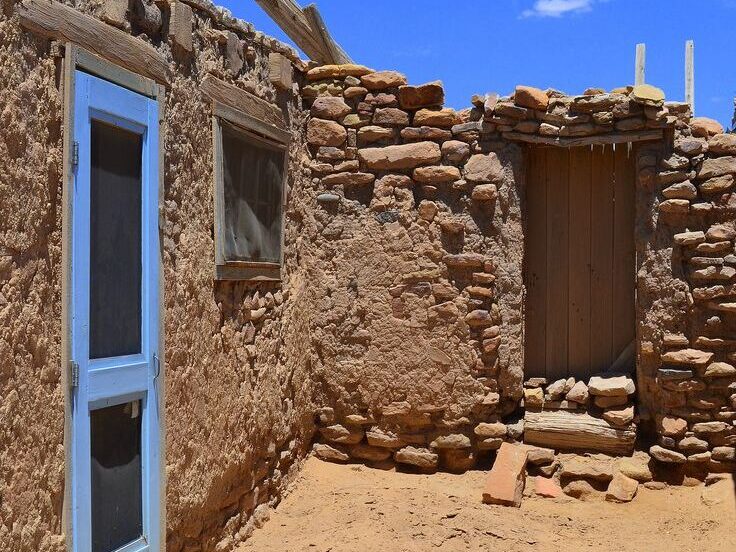
The Acoma Pueblo, often known as “Sky City,” dates back at least to the 12th century and is one of the oldest continuously inhabited cities in the United States. Today, the earthen town is home to fewer than 50 tribal members, many of whom care for the San Estévan del Rey Mission, which was established in 1640. The Sky City Cultural Center and Haak’u Museum beautifully maintain Acoma history and culture by displaying Native American pottery, paintings, and relics. Those looking to sample native Acoman cuisine can go to the Yaak’a (corn) Café, which serves both traditional Acoman dishes and American fare.
Taos
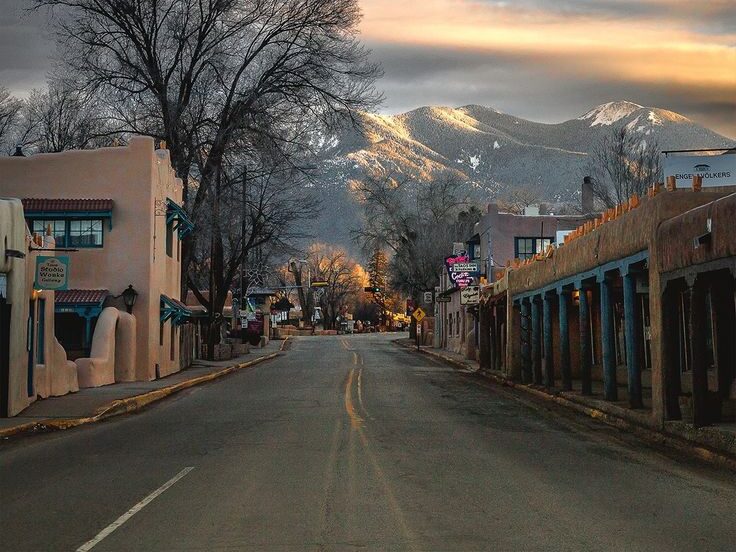
As the only Native American community to be listed as both a UNESCO World Heritage Site and National Historic Landmark, the history in Taos is literally one of a kind. The Taos Pueblo, which dates back nearly a millennium, is made completely of adobe, featuring thick walls and roofs supported by timber logs. The pueblo accepts visitors on Saturdays and Sundays and also hosts public events throughout the year. On September 30th, for example, San Geronimo Day will be celebrated with a large open market and trade fair, where visitors can observe the festivities and purchase home wares from vendors. Make sure to visit the San Francisco de Asis Church while in the area as well. Built in the early 19th century with plastered adobe walls, this is the only church in Taos that still remains.
Las Vegas
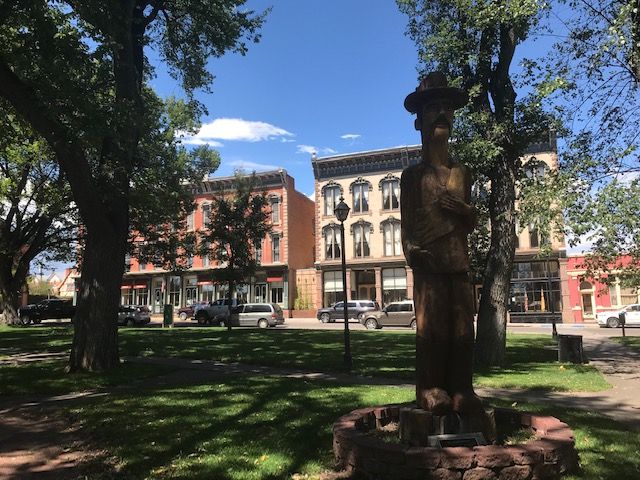
Las Vegas, not to be confused with the well known gambling destination in Nevada, is an architectural marvel with over 900 buildings on the National Register of Historic Places. The best way to understand the town’s history is to take a self guided walking tour, which is accessible on the town’s tourism website. The Wesche Dole Building, dating back to the early nineteenth century, and the Maese House, a one story adobe building built before 1846, are among the tour’s highlights. After the tour, get some dinner at Charlie’s Spic & Span Cafe, which has been offering Northern New Mexican cuisine for years. After that, visitors can unwind at the Plaza Hotel, which has been open since 1882.
Chimayo
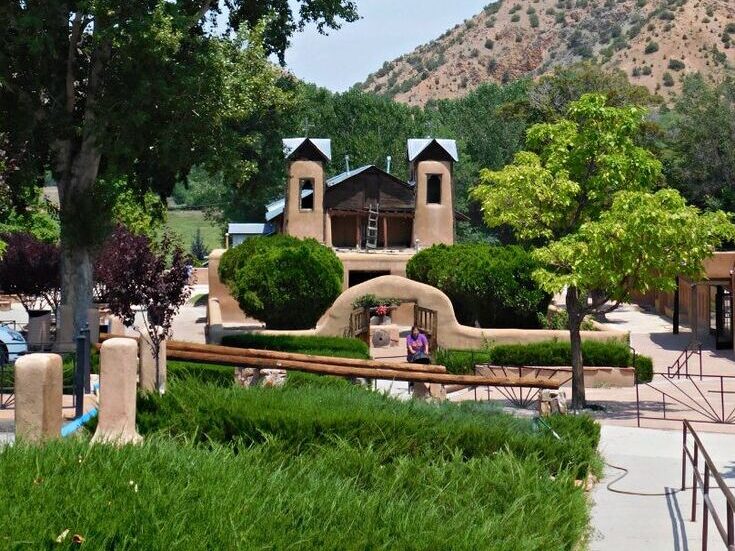
Every year, about 300,000 pilgrims go to Chimayo to see the Santuario de Chimayo, which many believe has magical healing abilities. The sanctuary is historically significant, having a chapel established in 1813 by Spanish missionaries, and Pueblo Natives have inhabited in the area since the 12th century. Local businesses have thrived in the neighborhood for generations, including Ortega’s Weaving Shop, a family owned business that has been passed down through nine generations and sells coats, vests, blankets, and carpets to the general public. For some New Mexican cuisine, visit Rancho de Chimayo, which has been serving traditional recipes since 1965.
Los Alamos
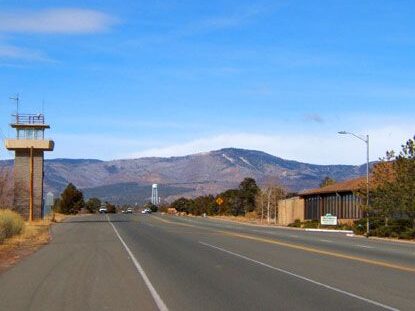
Los Alamos is likely best known as the site where the United States produced the first nuclear bombs, which are now preserved as the Manhattan Project National Historical Park. Visitors can explore the park and learn about the scientists who formerly worked there by visiting old buildings or joining a guided tour. Another feature is the Los Alamos History Museum, which was established in 1918 as an infirmary and now houses exhibits on the town’s most important history. Bandelier National Monument, located about 15 minutes south of town, is home to Ancestral Pueblo houses cut into steep canyons and mesas.
Socorro
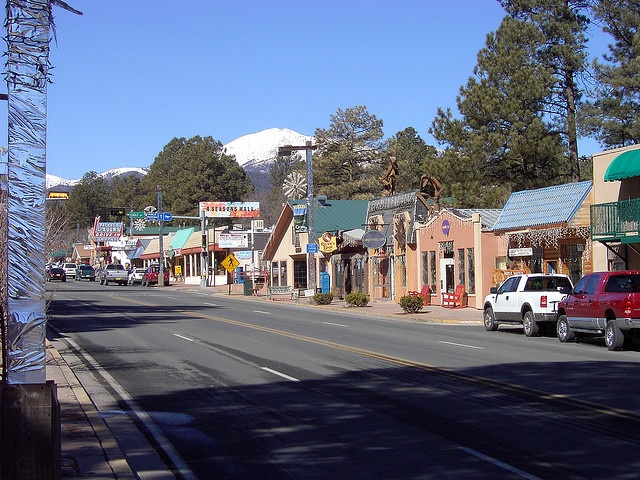
Socorro, which translates as “help” or “aid” in Spanish, was named in 1598 after the Pueblo people provided food and shelter to Spanish explorers traveling through. Some buildings date back to the 17th century, such as the San Miguel Mission, which houses a church erected between 1615 and 1626. This mission is located on the Socorro Historic District Scenic Byway, which showcases historic buildings that trace the town’s history from colonial times to mining and modern civilization. While you’re in town, visit the Mineral Museum, which was created in 1889 and houses 15,000 different minerals.
Lincoln
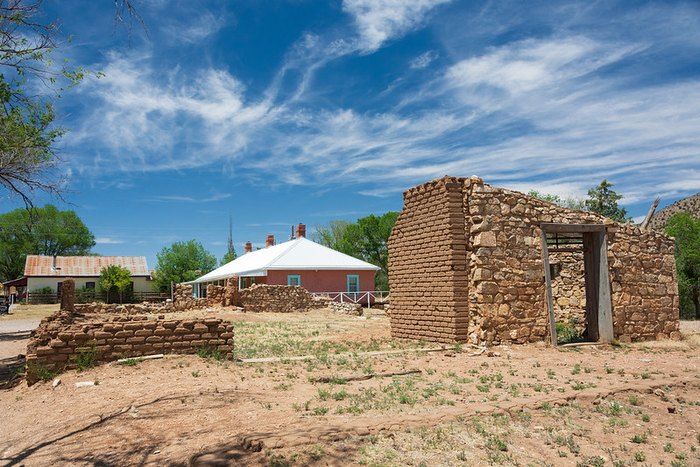
Lincoln was historically one of the most violent towns in the New Mexican Wild West, noted for housing notorious individuals like Billy the Kid. Visitors can learn more about this history at the Old Lincoln County Courthouse, which houses exhibits on the Lincoln County War and other significant events in the town. You may also travel back in time in the Tunstall Store, where real 19th century merchandise is still displayed on its original shelving. After that, unwind with a beer at Bonito Valley Brewing Company, an independent brewery situated in a 150 years old home.
Mesilla
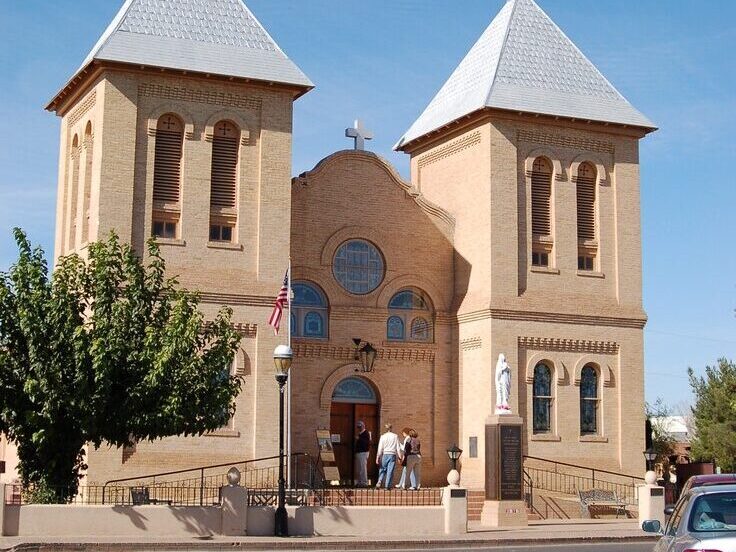
Visitors will be met by museums that recount the history of this centuries-old community, strings of red chiles, and thick walled adobe structures as they meander around Mesilla. One of the oldest churches in the valley, the San Albino Church was built in 1851 and is located on the town’s square. Located in a house built in 1849, Double Eagle is another place visitors can stop for dinner. There are several artisan stores to visit if you want to purchase a memento of your trip to Mesilla. Located directly on the plaza, Galeri Azul features a changing selection of folk art and souvenirs.
While every state has its share of historic sites, few have been conserved as well as New Mexico. You can visit heritage sites still inhabited by Native people, missions from the 1600s, and eateries built in 19th century architecture. Many companies, such as Ortega’s Weaving Shop, have been in the community for decades, allowing you to help preserve these long standing cultural practices. There’s no better time than now to discover these historic towns! Now which of these Time Capsule Towns in New Mexico are you visiting? let us know in the comment section!